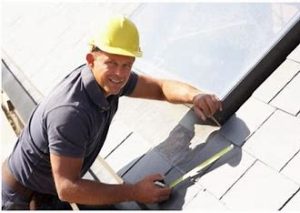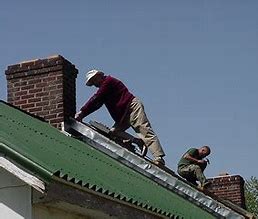How Safe is Your Roofing Website?
Do you know that more than 50,000 websites get hacked every day?
As a roofer, you must stay vigilant and prevent the bad guys (hackers) from compromising the integrity of your roofing website.
Website security can be a confusing topic for many roofing contractors because they have a lot of things to handle each day to keep their business running.
This post is meant to provide a clear framework for roofing contractors who want to apply simple security principles and mitigate the risk to their roofing web properties.
Without further ado, let’s dive into the website security for roofing contractors basics!
What is Roofing Website Security?
Simply put, roofing website security refers to actions taken to protect your website from cyber-attacks (the bad guys we mentioned earlier on). That said, website security is an integral part of managing your roofing website.
 Common Roofing Website Threats and How to Fix Them
Common Roofing Website Threats and How to Fix Them
For most roofing contractors, website security practices become a priority only after a data breach has occurred. Others wrongly think that all they need is a good antivirus and a spam filter program to keep the hackers away.
That said, no roofer is safe until he understands the potential security threats that can mess his roofing website. Here are the seven most common roofing website vulnerabilities that every roofer must safeguard against.
SQL Code Injections
Sometimes, hackers can inject a malicious code to corrupt or access your roofing website database content. If successful, the hacker can read, delete, update, steal, or alter information stored in your database. SQL code injection is the most prevalent kind of web security vulnerabilities that any roofer can dread.
SQL code injection can lead to destroyed data, compromised credentials, or make you lose control of your server.
Data Breach
Every roofing contractor knows that a data breach can cause irreversible damage to your roofing website. The most common causes of a data breach include malware, lost hardware, or software misconfiguration. As a roofer, you need to train your employees on how to avoid phishing attacks and practice good password hygiene.
In case, you note that your roofing website data has been compromised, your business may face compliance or legal requirements for alerting regulatory authorities or clients.
Spam
Usually, roofers perceive as something annoying. But we all receive spam emails delivered to our inbox or see regular spam popup every time we are browsing something online.
However, sometimes spam is more disastrous. Spam in the form of comments is prevalent in most roofing websites. Bots can try to create backlinks with links from another site using the comments section of your roofing website.
While those kinds of comments are annoying and don’t look good on your website, they are not that harmful to your site. However, some f these links contain malware, which can adversely affect your roofing prospects if they accidentally click on them.
Furthermore, Google crawlers can quickly identify malicious links and penalize your roofing website for encouraging spamming. This will negatively affect your SEO rankings.
 Viruses & Malware
Viruses & Malware
Malware refers to malicious software. Thus, malware and viruses are synonymous. They are, no doubt, the biggest threat to your roofing website.
With malware, both the roofing website owner and visitors are at risk. Some prospects visiting your roofing website might accidentally download a malicious file that could adversely affect their computer performance. Every roofing contractor must strive to keep their site secure and stop that from happening.
DDoS Attacks
DDoS threats attempt to block prospects from visiting your roofing website. Here, the bad guys (hackers) overload your roofing website servers with traffic. Generally, this takes your roofing website offline.
Simple Security Tips to Safeguard Your Roofing Website from Hackers
Now that you know the common threats that can compromise your roofing website security; its time to prevent them from happening!
You can’t just sit down and assume that your roofing website is secure from phishing attacks! If you have not taken proactive steps to improve your roofing website security, then you are vulnerable to cyber-attacks. Here are some simple steps you require to take to beef up your roofing website security:
Keep Your Roofing Software Up-to-Date
Any roofing software that your business is using needs to be to be updated regularly. The bad guys are aggressively targeting the gaps in your software to compromise your roofing website integrity. As a roofing contractor, you must update and maintain any roofing software your business is using to keep hackers at bay.
Keep Your Roofing Website Clutter-Free
It is said that never try to judge a book by its cover, but your roofing website appearance will either encourage or turn away hackers from entering your roofing website. You must keep your roofing website design organized and delete any unused files that hackers may use to access information from your roofing website. That’s why it is essential to hire a professional website design agency to build a clean site for your roofing business.
Scan Your Roofing Website for Vulnerabilities Regularly
It is crucial to perform security scans regularly to check for roofing website and server threats. However, these scans should be done on schedule, or any time you add web components.
Roofers can also use the various free online tools available to assess how safe their site is.
They should also hire a roofing SEO agency to check whether the web security vulnerabilities are affecting their SEO rankings. Hiring a professional roofing web security professional to assess the weaknesses on your roofing website would help secure your roofing business from cyber attacks.
 Develop and Enforce a Strong Password Usage Policy
Develop and Enforce a Strong Password Usage Policy
All your team members must create and use strong passwords. Hackers typically use sophisticated software to steal passwords. To avoid this disaster, make sure that your passwords contain lower case and upper case letters, special characters, and numerals. Your password should contain at least ten characters.
Use HTTPS Protocol
If your roofing website is not using HTTPS protocol, then your business is at risk! This protocol essentially tells your site’s visitors that they are interacting with a secure server, and nothing can intercept what they are currently viewing.
Without the HTTPS protocol, the bad guys can quickly gather personal details from your roofing website visitors. This protocol also will help to boost your site SEO rankings. Google is nowadays rewarding secure websites that use https protocol.
Avoid File uploads
Allowing prospects/ clients to upload their files on your roofing website can compromise your site’s security. The risk is that any external file uploaded on your roofing website may contain a script that may open up your website is executed. If you have a file upload option on your website, then you need to treat every file with much suspicion.
Need a Secure Roofing Website? We Can Help!
Roofing website security is imperative because every contractor has a legal responsibility to ensure that their client’s details are safeguarded from the bad guys (hackers). Fortunately, the Blackstorm roofing marketing web design team can help!
Blackstorm roofing marketing specializes in designing roofing websites that are appealing, secure, and converts lead into long-term clients. We believe that all roofing websites need to be safe. Hacked client personal details and data breach has been significant points of discussion in the recent past-and your prospects know this. Search engines like Bing and Google are giving preference to secure roofing websites.
If you want to improve the security of your roofing website but don’t know where to start, then don’t hesitate to book a free roofing web design strategy session with us today.






